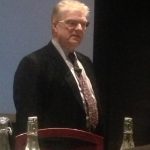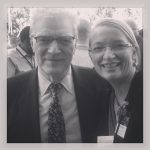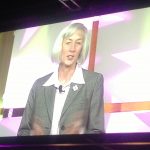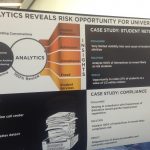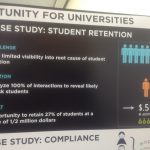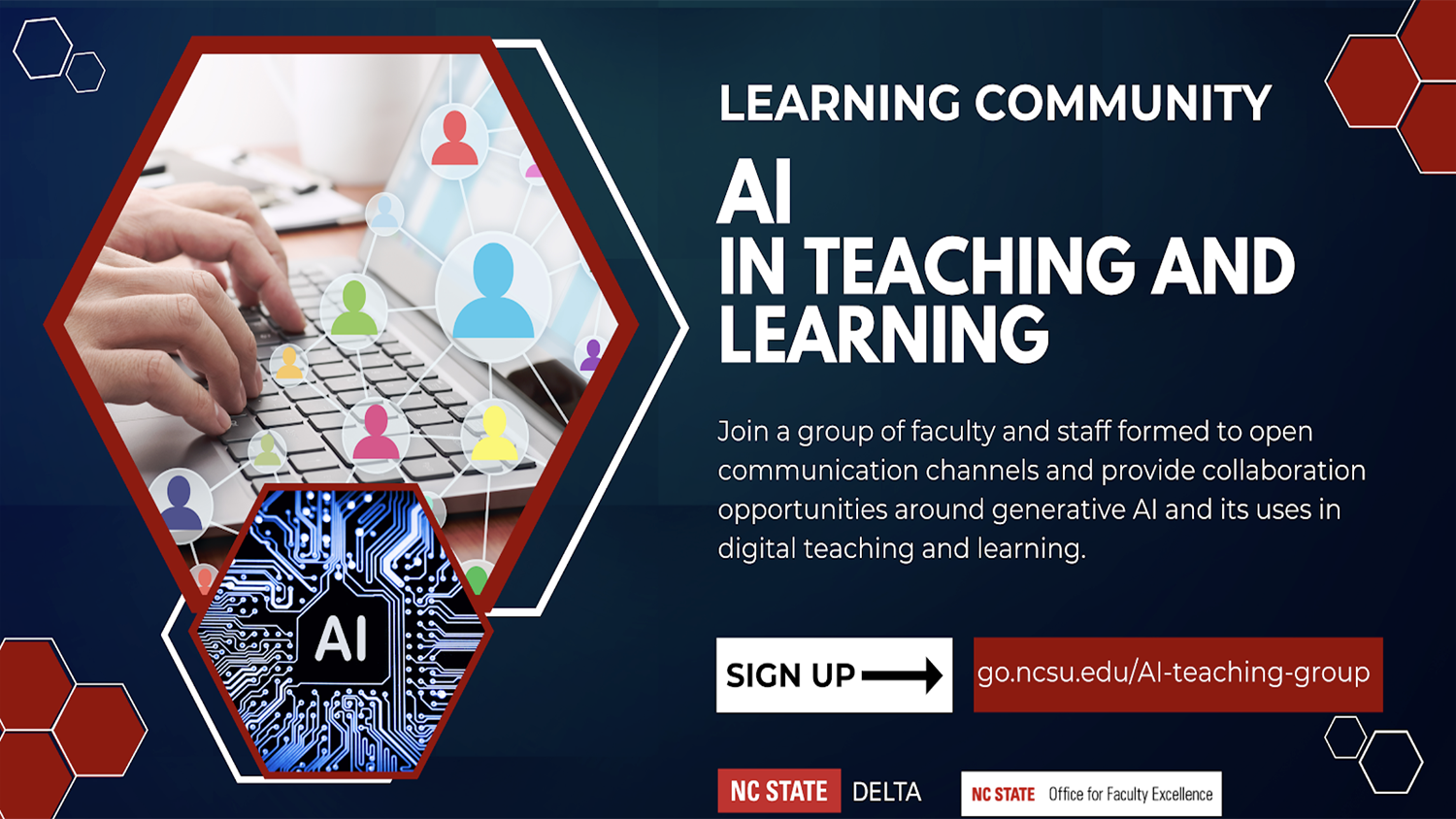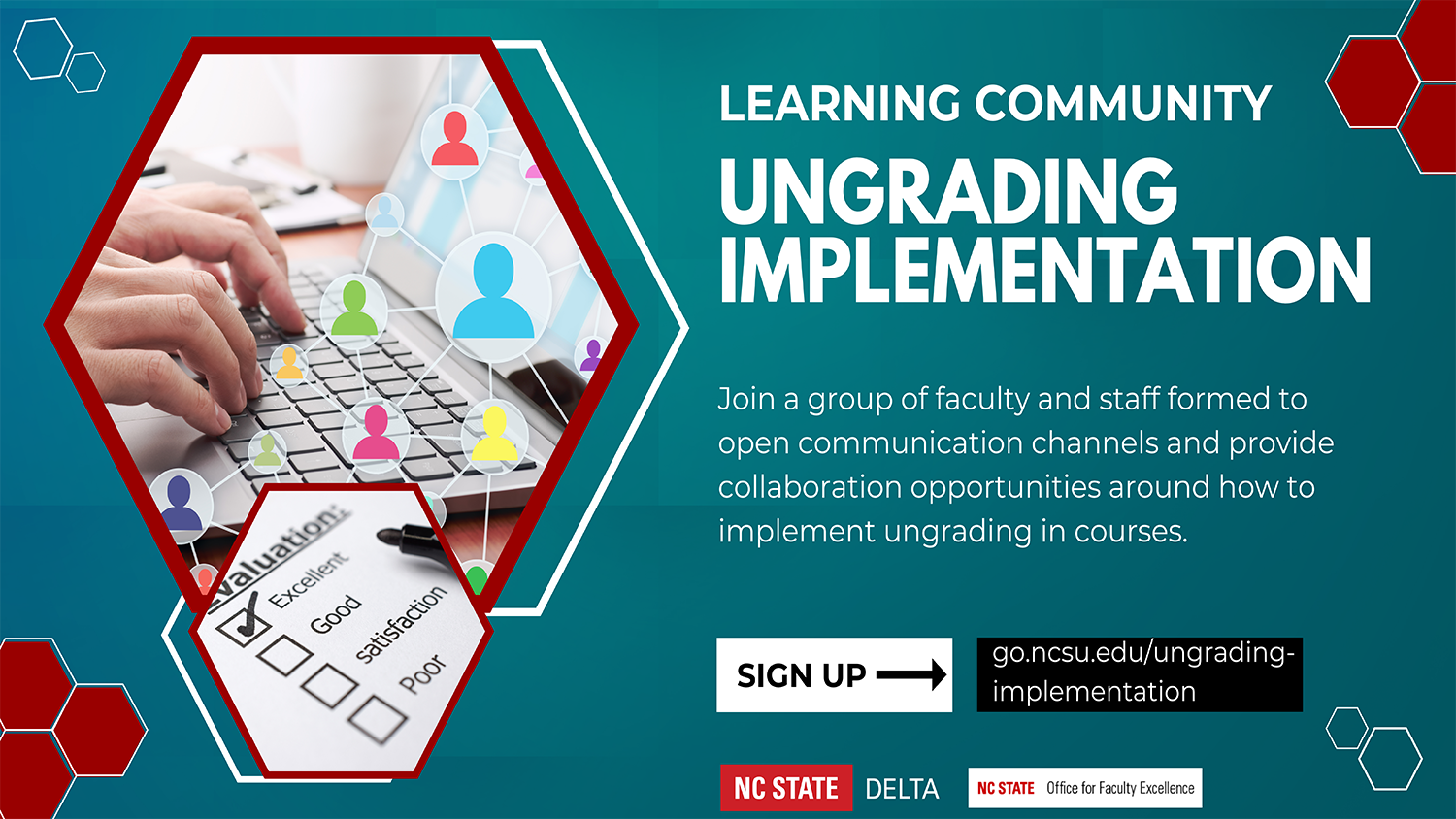Educause Conference: October 15-18, 2013
By Dr. Donna Petherbridge & Lou Harrison
From October 14 – 18, 2013, we attended the Educause Conference in Anaheim, California. In addition to our attendance at the conference, our DELTA colleagues participated via a virtual conference pass and took shared notes on the sessions attended to promote shared learning across our organization.
Perhaps the most fun we had was when we all (both in person and virtually) attended one of the keynote sessions (Higher Education is a Massively Multiplayer Game) together, and we were all participating in the massive multiplayer thumb wrestling portion of the presentation together, while taking pictures and tweeting them, though 3,000 miles and three hours apart. While this was fun stuff, the point of this session was to remind us that if we, as educators, could connect the 10 positive emotions of gaming (joy, relief, love, surprise, pride, curiosity, excitement, awe/wonder, contentment and creativity) with our educational efforts, that we might just create engaging environments where students don’t give up, but where they keep pushing through the tough material and actually learn. Very powerful was her notion that a gaming/narrative can change people’s perception of what is possible.
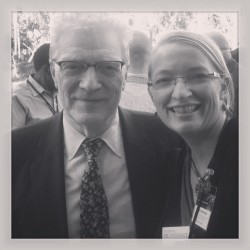 A highlight of the conference for Donna was attending an Oct. 15 meeting with senior technology leaders from other institutions, sponsored by Adobe, and also attended by NC State’s CIO Marc Hoit. Two neat things about this session: (1) a demo of the Mighty Pen & Napoleon by Adobe’s Vice President of Experience Design, Michael Gough (a terrific speaker, btw), and (2) a chance to hear keynote speaker Sir Ken Robinson talk about the importance of encouraging your organization to be creative. Donna has been a fan of Ken’s since some of his early TED talks, and was delighted to attend a reception with him after the meeting and toss around ideas for a while. They had a lovely discussion about the importance of focusing on every individual’s talent, creativity and imagination as key to both the well being of each person, and the well being of any innovative organization. This was followed the next day by Ken’s keynote speech on Leading a Culture of Innovation, and he was simply, in a word, inspiring.
A highlight of the conference for Donna was attending an Oct. 15 meeting with senior technology leaders from other institutions, sponsored by Adobe, and also attended by NC State’s CIO Marc Hoit. Two neat things about this session: (1) a demo of the Mighty Pen & Napoleon by Adobe’s Vice President of Experience Design, Michael Gough (a terrific speaker, btw), and (2) a chance to hear keynote speaker Sir Ken Robinson talk about the importance of encouraging your organization to be creative. Donna has been a fan of Ken’s since some of his early TED talks, and was delighted to attend a reception with him after the meeting and toss around ideas for a while. They had a lovely discussion about the importance of focusing on every individual’s talent, creativity and imagination as key to both the well being of each person, and the well being of any innovative organization. This was followed the next day by Ken’s keynote speech on Leading a Culture of Innovation, and he was simply, in a word, inspiring.
Another highlight for Donna was participating in the Hawkins leadership roundtable, with other technology leaders and aspiring leaders from around the nation and abroad. The sessions in this program really pushed the participants to better articulate the value of IT in supporting and sustaining both organizations and innovations, and was well worth the time involved in the different meetings/sessions required for participation. In an early Friday morning session (yep, 7:30 a.m.), Paul LeBlanc (who was also Friday’s keynote) came to speak to the participants in this program, and talked about how successful CIOs/technology leaders had to be business strategists – that knowing about the technology simply isn’t enough to lead efforts in the area. He emphasized the importance of good technology leaders being detailed oriented, willing to embrace change/try out innovative things, and his belief in the importance of competency-based learning.
We attended several sessions (as well as had some discussion with vendors) about Learning Analytics. A few highlights here included:
-
Learner Analytics in a Large Enrollment Course (note, this study found that student effort in a course, as measured by their participation in the LMS, was a better predictor of success than traditional demographic data)
-
Predictive Analytics: A Case Study in Improving Student Success
-
Vendor conversations with Questionmark, Blackboard, Rapid Insight, Pinnacle IT, Pearson, Scantron Corporation, The Learning House, Ad Astra Information Systems, ExamSoft, and Starfish Retention Solutions
What most impressed us (at least from a learning analytics perspective) was the OAAI session by Josh Baron from Marist College in New York, and the dashboard system developed by Starfish Retention (run by David Yaskin, someone Lou knows from his days at Blackboard). OAAI is an open project which was funded by a $250,000 grant from the Gates foundation. OAAI has done some really interesting work with predictive models including a markup language for specifying them, and have some really great ideas about extremely large data aggregation to help build the models based on information we know about classes, students and faculty. Very interesting stuff, and their code is available in GitHub to boot. It’s definitely something worth a deeper look in any dive we take into learning analytics. Starfish, on the other hand, doesn’t use predictive models; they use set thresholds. We’re not sure exactly how the thresholds get set, but we are interested in diving a little deeper with them as well.
We also met and talked, at length, to John Whitmer from California State University, who has a real depth of understanding with learning analytics and student dashboards and we’re committed to a continued dialog with him, as he’s a font of knowledge and willing to share. He’s also really interested in meeting our neighbors in NC State’s Advanced Analytics program.
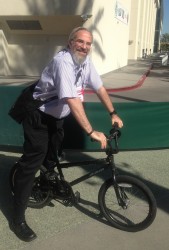 Lou spent much of his additional time following up with some of our existing vendors and may have uncovered some people with Equella experience to apply for our open Equella support position. He also touched base with folks from Blackboard Collaborate and the entire Sonic Foundry management team (no time for the in depth conversations like we have at UNLEASHed in Madison, but it’s important to keep the relationships active). Lou also “borrowed” a bike to travel from his hotel to the conference, as it was a bit of a walk!
Lou spent much of his additional time following up with some of our existing vendors and may have uncovered some people with Equella experience to apply for our open Equella support position. He also touched base with folks from Blackboard Collaborate and the entire Sonic Foundry management team (no time for the in depth conversations like we have at UNLEASHed in Madison, but it’s important to keep the relationships active). Lou also “borrowed” a bike to travel from his hotel to the conference, as it was a bit of a walk!
We also took some time to look at other Learning Management Systems, including Canvas Instructure, Blackboard and Desire2Learn for a bit (not to worry anyone right now about our current use of Moodle, but just to take a look). The takeaway for us is that while each system may have a few different pieces that are interesting/useful and slightly different from the other systems, that LMSs in general, whether commercial or open source, are very similar in what they allow instructors and students to do. While it is definitely worth keeping an eye on this market and maintaining an awareness, there is certainly not a compelling reason to deeply investigate another LMS tool at this time. Rather, we would encourage our user community to continue to suggest features that we can implement into our existing LMS to meet user needs.
You can’t go to a conference without tripping over a MOOC session, so Donna attended one session about leveraging MOOCs to increase college readiness. The gist of this session is that the school giving this presentation put a remedial math course online and allowed students to take that course PRIOR to the placement tests given. This seemed to be a good, “free way” for students to try out a course – and at the end of the course, the students take a test that places them in the appropriate math. Students could complete the course quite quickly – it was noted that most could complete the course in 5 weeks.
Overall, it was a packed week of sessions, meetings, and conversations, but from our perspective, well worth the time.
- Categories:
